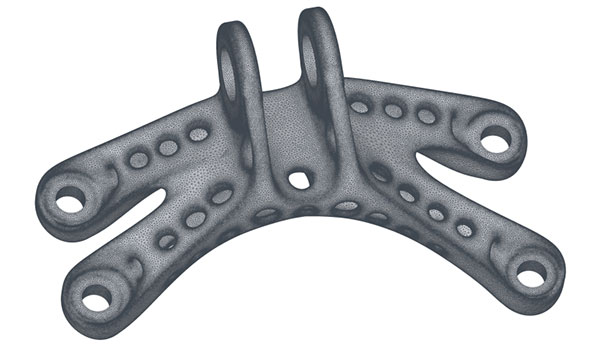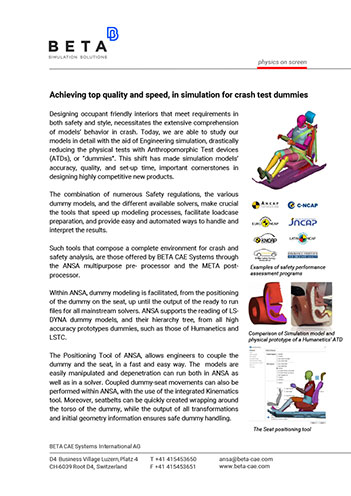MachineWorks Releases Polygonica 3.1
Company makes available the Polygonica 3.1 SDK for polygon mesh modealing.

Curvature sensitive remeshing of a bracket to a maximum “chordal” deviation of 0.01 mm.
Pre-processing and Meshing News
Pre-processing and Meshing Resources

Latest News
November 23, 2021
MachineWorks makes available the Polygonica 3.1 SDK for polygon mesh modeling.
Some of the improvements in Polygonica 3.1 include:
- New .NET wrappers supporting programming with C# and other .NET languages
- Multithreaded Boolean union of multiple solids, including out-of-core support
- Identification of curves along curvature extrema of a mesh (crests and troughs)
- New non-manifold geometry healing that works on open surfaces with defects
- Recognition of screw threads in surface detection
- Memory-efficient method for slicing huge numbers of solids
- Optimization of mesh export to support faster updates to external graphics
- Direct export of mesh solids that conform to Siemens Parasolid
Regarding remeshing, in this latest release there is new multithreading support for faster remeshing of large datasets. There is also preservation of user-defined boundaries to support mapping of original CAD surface patches and CAE boundary conditions.
As for the shrink-wrapping feature, color, texture and custom face attributes can be transferred to the shrink-wrap. Internal tunnel faces can be extracted as a separate mesh.
With selection, users have greater control and flexibility in growing selection regions, including constraining to smooth areas. Users can also separate distinct islands into separate selection regions. Also, fill gaps in selection regions to provide full surface coverage within the region boundary. Additionally, compute local properties including flatness and distance to nearest sharp edge.
For 2D Profile operations, there is generation of medial axis offset contours, support for Boolean operations on open profiles, fast serialization, convex hull computation, purging of insignificant loops, and query of parent-child relationships for profiles with multiple holes and nested islands.
For 3D curve operations, users can use regions to mask curve to surface mapping operations, smooth 3D curves generated from noisy region boundaries, and constrain curve smoothing within a region of the surface, for example to prevent crossing feature edges.
“In Polygonica 3.0 we added significant new areas of functionality,” says Dr Fenqiang Lin, managing director of MachineWorks. “The 3.1 release cycle has seen great efforts to further improve existing functionality in response to customer feedback, and also development of interesting new techniques we believe have lots of potential.”
“We’ve seen a significant increase in adoption of remeshing during the last year, partly driven by the addition of curvature sensitive remeshing in Polygonica 3.0,” Lin says.
“Our initial investigations into the identification of curvature extrema were specifically to help find gum lines for the dental market,” Lin adds. “We now see the potential value in identifying other feature lines in scanned mesh data for improving reverse-engineering workflows, and we plan to develop this interesting technique further in future releases.”
“Although we’re now seeing significantly increased demand for Linux, the addition of .NET wrappers will please a lot of users building more traditional desktop solutions,” says Richard Baxter, head of Sales and Marketing. “Polygonica marches on.”
Sources: Press materials received from the company and additional information gleaned from the company’s website.
More MachineWorks Coverage
Subscribe to our FREE magazine, FREE email newsletters or both!
Latest News
About the Author
DE’s editors contribute news and new product announcements to Digital Engineering.
Press releases may be sent to them via DE-Editors@digitaleng.news.




